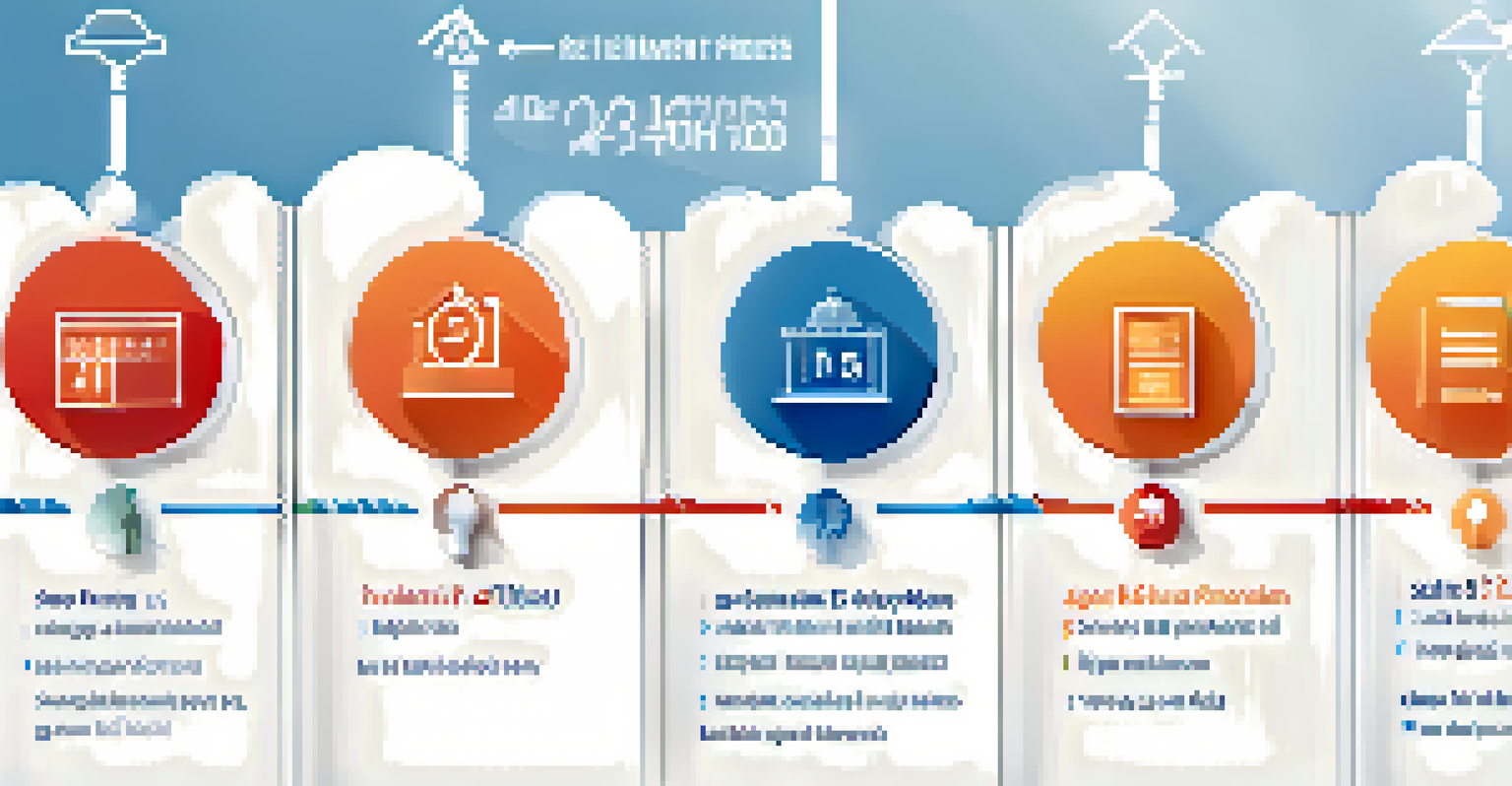What Happens to Your Funds During a Retirement Rollover?

What Is a Retirement Rollover and Why It Matters
A retirement rollover is the process of moving funds from one retirement account to another, usually when you change jobs or retire. This action is crucial as it helps you maintain the tax advantages of your retirement savings. Understanding this process is vital to ensure your funds grow effectively and avoid unnecessary tax penalties.
The future belongs to those who believe in the beauty of their dreams.
For example, rolling over a 401(k) into an IRA allows for a wider range of investment options. This flexibility can be beneficial in aligning your retirement savings with your long-term financial goals. It also helps to keep your savings organized, making it easier to manage as you approach retirement.
However, if not done correctly, rollovers can trigger taxes or penalties. Knowing the ins and outs of this process can save you from potential pitfalls and ensure that your retirement savings remain intact.
The Different Types of Retirement Accounts Involved
When considering a rollover, you typically deal with accounts like 401(k)s, IRAs, or Roth IRAs. Each account type has its unique rules and benefits, which can influence your decision. For instance, a traditional IRA allows for tax-deferred growth, while a Roth IRA offers tax-free withdrawals in retirement.

If you have a 401(k) from a previous employer, you might roll it over into a traditional IRA or even into a new employer's 401(k). Each option has its advantages, such as investment choices and management fees, which can impact your overall retirement savings.
Understanding Retirement Rollovers
A retirement rollover is essential for maintaining the tax advantages of your savings when changing jobs or retiring.
Understanding these account types helps you make informed choices. The right rollover strategy can enhance your retirement portfolio and align it with your financial goals.
The Process of Initiating a Rollover
Initiating a rollover starts with contacting your current retirement plan administrator. They will provide you with the necessary forms and instructions needed to start the process. It’s essential to ensure you understand what is required to avoid delays or errors.
An investment in knowledge pays the best interest.
After submitting your request, the funds are usually transferred directly to the new account, a process known as a direct rollover. This method is preferred since it helps you avoid tax withholding and potential penalties. It’s like passing the baton in a relay race—smooth and efficient!
Once the funds are in the new account, you can start managing them according to your investment strategy. This is a crucial step in setting up your financial future, so take your time to choose wisely.
Potential Tax Implications to Consider
One of the most critical aspects of a retirement rollover is understanding the tax implications. While direct rollovers typically do not incur taxes, indirect rollovers may. An indirect rollover occurs when you receive the funds first and then deposit them into another account, which must be done within 60 days to avoid taxes.
If you miss that deadline, the IRS treats it as a distribution, and you may face penalties. Imagine it as a delicate balancing act—one misstep can lead to a financial tumble. Staying informed is your best safety net.
Choosing the Right Account Type
Deciding between a traditional IRA and a Roth IRA can significantly influence your tax situation and retirement income strategy.
Therefore, always consult with a tax professional when planning a rollover. They can provide insights tailored to your financial situation and help you navigate the complexities of tax regulations.
Choosing Between Traditional and Roth IRAs
Deciding between rolling over to a traditional IRA or a Roth IRA can significantly impact your tax situation. A traditional IRA allows you to defer taxes until withdrawal during retirement, while a Roth IRA requires you to pay taxes upfront but offers tax-free withdrawals later. This choice is pivotal in shaping your retirement income strategy.
For instance, if you expect to be in a higher tax bracket during retirement, a Roth IRA might be the better option. It’s like choosing between paying for a ticket now or later; understanding your future situation can help you save money in the long run.
Consider your current financial landscape and future goals when making this decision. Evaluating your options can set the groundwork for a more secure retirement.
Managing Investments After the Rollover
Once your funds are successfully rolled over, the next step is managing your investments. This is your opportunity to review your investment strategy and ensure it aligns with your retirement goals. Think of it as tending to a garden; regular maintenance helps it flourish.
Diversification is key in this stage. By spreading your investments across various asset classes, you can mitigate risks and enhance potential growth. It’s similar to having a balanced diet—variety helps you stay healthy and thriving.
Avoiding Common Rollover Mistakes
Being aware of common pitfalls, such as missing deadlines and ignoring fees, can help protect your retirement savings during a rollover.
Regularly reviewing and adjusting your portfolio as needed will help ensure your investments remain on track. Stay proactive, and your retirement funds can grow and flourish over time.
Common Mistakes to Avoid During a Rollover
Many individuals make common mistakes during rollovers that can jeopardize their retirement savings. One of the most frequent errors is failing to complete the rollover within the required timeframe, especially with indirect rollovers. This can lead to unwanted taxes and penalties, which can significantly impact your savings.
Another mistake is not understanding the fees associated with the new account. Some investment accounts come with management fees that can erode your returns over time. Consider it like shopping for groceries; knowing the prices helps you avoid overspending.

Lastly, not seeking professional guidance can be a costly oversight. Consulting with a financial advisor can provide clarity and help you navigate the complexities of the rollover process, ensuring you make the best decisions for your retirement.